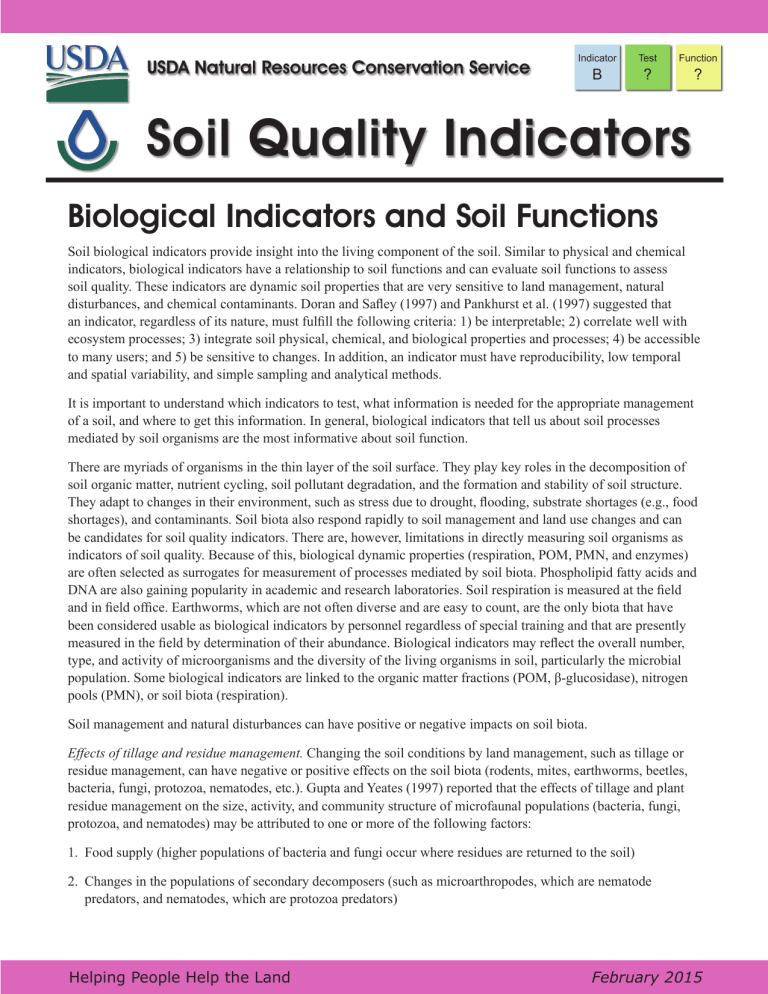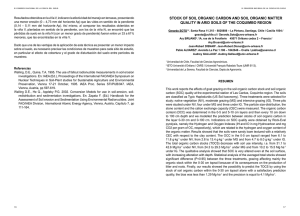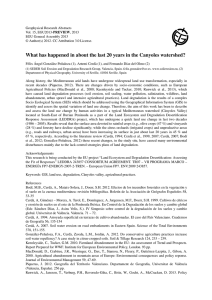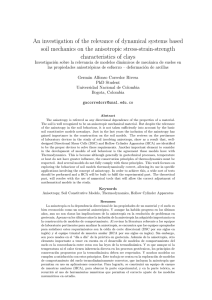
USDA Natural Resources Conservation Service Indicator B Test ? Function ? Soil Quality Indicators Biological Indicators and Soil Functions Soil biological indicators provide insight into the living component of the soil. Similar to physical and chemical indicators, biological indicators have a relationship to soil functions and can evaluate soil functions to assess soil quality. These indicators are dynamic soil properties that are very sensitive to land management, natural disturbances, and chemical contaminants. Doran and Safley (1997) and Pankhurst et al. (1997) suggested that an indicator, regardless of its nature, must fulfill the following criteria: 1) be interpretable; 2) correlate well with ecosystem processes; 3) integrate soil physical, chemical, and biological properties and processes; 4) be accessible to many users; and 5) be sensitive to changes. In addition, an indicator must have reproducibility, low temporal and spatial variability, and simple sampling and analytical methods. It is important to understand which indicators to test, what information is needed for the appropriate management of a soil, and where to get this information. In general, biological indicators that tell us about soil processes mediated by soil organisms are the most informative about soil function. There are myriads of organisms in the thin layer of the soil surface. They play key roles in the decomposition of soil organic matter, nutrient cycling, soil pollutant degradation, and the formation and stability of soil structure. They adapt to changes in their environment, such as stress due to drought, flooding, substrate shortages (e.g., food shortages), and contaminants. Soil biota also respond rapidly to soil management and land use changes and can be candidates for soil quality indicators. There are, however, limitations in directly measuring soil organisms as indicators of soil quality. Because of this, biological dynamic properties (respiration, POM, PMN, and enzymes) are often selected as surrogates for measurement of processes mediated by soil biota. Phospholipid fatty acids and DNA are also gaining popularity in academic and research laboratories. Soil respiration is measured at the field and in field office. Earthworms, which are not often diverse and are easy to count, are the only biota that have been considered usable as biological indicators by personnel regardless of special training and that are presently measured in the field by determination of their abundance. Biological indicators may reflect the overall number, type, and activity of microorganisms and the diversity of the living organisms in soil, particularly the microbial population. Some biological indicators are linked to the organic matter fractions (POM, β-glucosidase), nitrogen pools (PMN), or soil biota (respiration). Soil management and natural disturbances can have positive or negative impacts on soil biota. Effects of tillage and residue management. Changing the soil conditions by land management, such as tillage or residue management, can have negative or positive effects on the soil biota (rodents, mites, earthworms, beetles, bacteria, fungi, protozoa, nematodes, etc.). Gupta and Yeates (1997) reported that the effects of tillage and plant residue management on the size, activity, and community structure of microfaunal populations (bacteria, fungi, protozoa, and nematodes) may be attributed to one or more of the following factors: 1. Food supply (higher populations of bacteria and fungi occur where residues are returned to the soil) 2. Changes in the populations of secondary decomposers (such as microarthropodes, which are nematode predators, and nematodes, which are protozoa predators) Helping People Help the Land February 2015 Biological Indicators and Soil Functions 3. Altered physical soil properties (e.g., improved aggregate stability because of reduced tillage systems and improved moisture availability because of residue retention) 4. Changes in the distribution of OM residues down through the soil profile (e.g., a more even distribution of OM in cultivated soils compared to that in minimum-tilled soils where residues are concentrated in the soil surface layer) 5. Application of pesticides, fungicides, and other chemicals poisonous to biota 6. Cropping systems (rotations, cover crops, conventional tillage, fertilizers, etc.) Effects of soil acidification. Soil acidification caused by continuous cultivation or application of acidifying fertilizers (ammonium sulfate or ammonium nitrate, sulfur) can reduce soil pH and hamper the growth and activity of the bacterial population (except acidophilic bacteria). Unlike bacteria, fungi can adapt to a large range of pH. The optimum pH is 7. Effects of irrigation and addition of salt. Irrigation water with high salt levels can also be a source of soil salinization. Actinomycetes and fungi are less sensitive to salinization than bacteria, except for halophyte (salttolerant) bacteria. Effects of conservation practices. Plant rotations particularly affect mycorrhizal fungi because some plant species are easily infected by the fungi and others are not. Including legumes in the rotation sequence stimulates rhizobia bacteria but can be a source of soil acidification that suppresses the growth of other bacteria. Effects of natural disturbances and stresses. Natural disturbances (e.g., fire, droughtness, and flooding) and management disturbances (e.g., soil management involving cultivation, fertilizer, pesticides, and herbicides) result in stressful conditions for microorganisms. These stresses (see Table 1) can be temporary or permanent. In response to short-term perturbation, biological communities in a healthy soil will return relatively quickly to the initial conditions. Long-term or chronic stress will result in long-term succession, leading to a new dynamic equilibrium among ecosystem components (van Bruggen and Semenov, 2000). Table 1. Stressors. Physical Chemical Biological Extreme temperatures pH Nutrient deficiency or excess a Matric potential (drying and wetting cycles) Excess or shortage of inorganic nutrients Exogenous organisms with a high competitive ability Osmotic potential Anoxia Uncontrolled growth of particular organisms, such as pathogens and predators High pressure (e.g., from agricultural equipment Salinity Biocide (heavy metals, radioactive pollutants, pesticides, and hydrocarbons) a Oligotrophic and eutrophic environments are examples. Many biological indicators in the matrix are related to organic matter and are linked to nutrient cycling and the biodiversity and productivity functions. Table 2 shows biological indicators as related to soil-quality functions. Page 2 Biological Indicators and Soil Functions Table 2. Biological indicators as related to soil quality functions. (The number of asterisks indicates the strength of the relationship between the indicator and the function. For example, 3 asterisks mean that the chemical is a major indicator and 1 or 2 asterisks mean that the chemical is a minor indicator.) Soil Function Sustain biological diversity, activity, and productivity “D” Soil Quality Indicator Earthworms b,d Regulate and partition water and solute flow “W” Filter, buffer, degrade, detoxify organic and inorganic materials “F” Store and cycle nutrients and carbon “N” Physical stability and support for plants and structures associated with human habitation “S” —— Particulate Organic Matter a,c a Potentially Mineralizable Nitrogen a,c —— —— —— Soil Enzymes a —— —— —— Soil Respiration a,b,c —— laboratory/office method b field method c time consuming d simple visual observation Earthworms are native to non-glaciated areas of North America, but non-native species from Europe and Asia also exist in these areas. They are classified into three groups based on their habitat. Litter-dwellers live in the litter, ingest plant residues, and may be absent in plowed, litter-free soil. Mineral soil-dwellers live in topsoil that is rich in organic matter. They burrow narrow channels and feed on a mixture of soil and plant residues. Deep soil-burrowers (night crawlers) dig long, large burrows into deep soil layers. They carry with them plant residues for consumption. Earthworm cast is digested material that is excreted back into the soil. Cast is enriched with nutrients (N, P, K, and Ca) and microorganisms during its passage through the worm’s digestive system. Fresh cast is a site of intense microbial activity and nutrient cycling. Earthworms contribute nutrients to the soil and improve porosity, tilth, and root development. They also contribute to the building of soil structure and aggregate stabilization. Soil enzymes increase the reaction rate at which plant residues decompose and release plant-available nutrients. They are catalysts—without undergoing permanent alteration, they cause chemical reactions to proceed at faster rates (Tabatabai, 1994). The substance acted upon by a soil enzyme is called the substrate. For example, glucosidase (soil enzyme) cleaves glucose (sugar) from glucoside (substrate), a compound common in plants. Enzymes are specific to a substrate and have active sites that bind with the substrate to form a temporary complex. The enzymatic reaction releases a product, which can be a nutrient contained in the substrate. Soil enzymes do not represent true in situ activity levels and must be viewed as an index. Enzymes are quicker to respond to changes occurring in the soil (2 years). Particulate organic matter (POM) fraction, as discussed in this document, comprises all soil organic matter (SOM) particles less than 2 mm and greater than 0.053 mm in size (Cambardella and Elliot, 1992). POM is biologically and chemically active and is part of the labile (easily decomposable) pool of SOM. Studies have shown that POM accounts for small to large amounts of soil C (20 percent or more) in some soils of eastern Canada and the United States, depending upon agroecosystems and management practices. More POM-C Page 3 Biological Indicators and Soil Functions was measured in undisturbed soils than in disturbed soils, e.g, those under conventional tillage (Cambardella and Elliot, 1992). Potentially mineralizable nitrogen (PMN) can be defined as the fraction of organic nitrogen converted to plantavailable (or mineral) forms under specific conditions of temperature, moisture, aeration, and time. Determining levels of PMN can provide an estimate of available N in the soil. PMN originates mainly from microbial biomass and plant and animal tissues——the main source of the organic nitrogen pool. It represents the fraction of nitrogen easily decomposable by soil microorganisms and is considered an indirect measure of nitrogen availability during the growing season (if measured during that period). While the potential for anaerobic N mineralization may be a good indicator of the potential for soil to deliver N, it does not necessarily reflect microbial biomass N levels. It was suggested that the ratio of N mineralized to total organic nitrogen N could serve as a sensitive indicator of differences in soil organic matter. References Cambardella, C.A., and E.T. Elliot. 1992. Particulate soil organic matter changes across a grassland cultivation sequence. Soil Science Society of America Journal 56:777-83. Dick, R.P. 1994. Soil enzyme activity as an indicator of soil quality. In J.W. Doran et al. (eds.) Defining Soil Quality for a Sustainable Environment, pp. 107-124. Madison, WI. Doran, J.W., and M. Safley. 1997. Defining and assessing soil health and sustainable productivity. In C.E. Pankhurst, B.M. Doube, and V.V.S.R. Gupta (eds.) Biological Indicators of Soil Health, pp. 1-28. CAB International. Drinkwater, L.E., C.A. Cambardella, J. Reeder, and C. Rice. 1996. Potentially mineralizable nitrogen as an indicator of biologically active soil nitrogen. In J.W. Doran and A.J. Jones (eds.) Methods for Assessing Soil Quality. Soil Science Society of America Special Publication 49:217-229. Gupta, V.V.S.R., and G.W. Yeates. 1997. Soil micro fauna as indicators of soil health. In C.E. Pankhurst, B.M. Doube, and V.V.S.R. Gupta (eds.) Biological Indicators of Soil Health, pp. 201-231. CAB International. Pankhurst, C E., B.M. Doube, and V.V.S.R. Gupta. 1997. Biological indicators of soil health: Synthesis. In C.E. Pankhurst, B.M. Doube, and V.V.S.R. Gupta (eds.) Biological Indicators of Soil Health. CAB International. Smith, J.L., and J.W. Doran. 1996. Measurement and use of pH and electrical conductivity for soil quality analysis. In J.W. Doran and A.J. Jones (eds.) Methods for Assessing Soil Quality. Soil Science Society of America Special Publication 49:169-185. Tabatabai, M.A. 1994. Soil enzymes. In R.W. Weaver et al. (eds.) Methods of Soil Analysis, Part 2. Microbiological and Biochemical Properties, pp. 775-833. Van Bruggen, A.H.C., and A.M. Semenov. 2000. In search of biological indicators for soil health and disease suppression. Applied Soil Ecology 15:13–24. USDA is an equal opportunity provider and employer. Page 4









